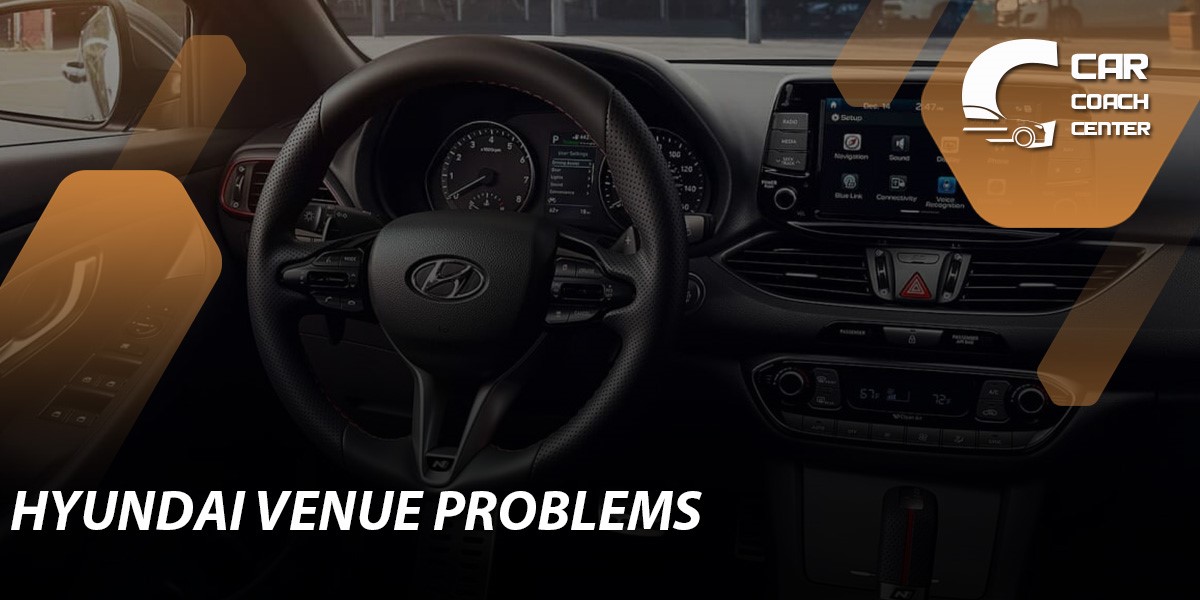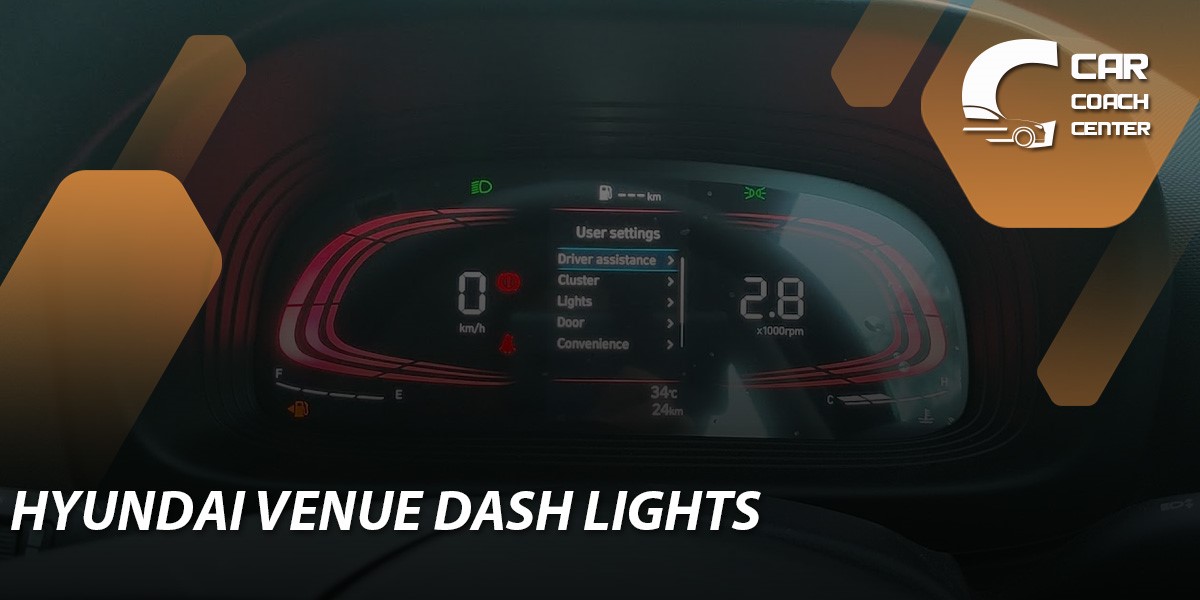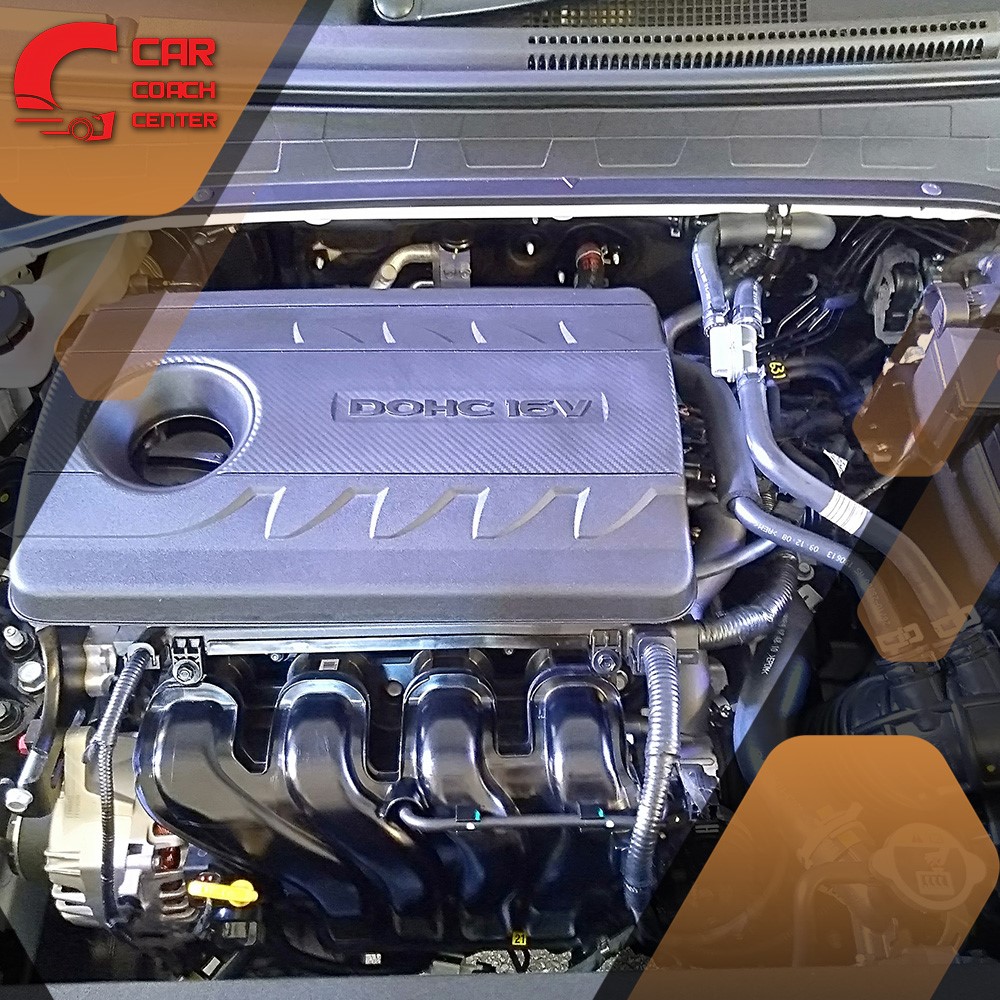Hyundai Venue Warning Lights
Welcome to the comprehensive guide on “Hyundai Venue Warning Lights.” As a responsible car owner, staying informed about your vehicle’s health is crucial for safe and hassle-free driving experiences. Modern cars, including the popular Hyundai Venue, have advanced warning systems that communicate essential information about the vehicle’s status.

The dashboard of your Hyundai Venue is adorned with an array of warning lights, each representing a specific aspect of your car’s functioning. Understanding these warning lights is vital as they serve as early indicators of potential issues, helping you take timely action and prevent costly breakdowns.
In this article, we will delve into the world of Hyundai Venue warning lights, breaking down the meanings behind each signal, exploring the difference between critical red alerts and positive green signals, uncovering lesser-known indicators, addressing common FAQs, and equipping you with tips on how to respond effectively to these warning lights. So, let’s shed light on the mystery behind the glowing symbols and empower you to confidently stay road-ready!
Decoding the Dashboard: Understanding Hyundai Venue Warning Lights
As a Hyundai Venue owner, clearly understanding the warning lights on your dashboard is essential for maintaining your car’s health and ensuring your safety on the road. These warning lights are designed to provide you with crucial information about various systems and components of your vehicle. Let’s explore some of the most common warning lights found on the Hyundai Venue dashboard:
Check Engine Light
One of the most notorious warning lights, the check engine light, appears when there’s a potential issue with the engine or emission control system. It could indicate anything from a loose gas cap to serious engine problems. If this light comes on, getting your vehicle inspected by a qualified mechanic as soon as possible is advisable.
Battery Indicator
This light typically resembles a battery and illuminates when there’s an issue with the charging system. It could indicate a faulty alternator, a weak battery, or problems with the electrical connections. Ignoring this light could lead to a dead battery and leave you stranded.
Oil Pressure Warning Light
When you see an oil can-shaped light, the engine has low oil pressure. Low oil pressure can be caused by insufficient oil levels or oil pump problems. If this light comes on, immediately pull over safely and check your oil levels.
Brake System Warning Light
This light, usually depicting the word “BRAKE,” indicates an issue with the brake system. Low brake fluid, worn brake pads, or more severe brake problems could trigger it. If you ignore this warning, your safety is at risk, so have the brake system immediately inspected.
Tire Pressure Monitoring System (TPMS) Light
This light looks like a tire with an exclamation mark inside and turns on when the TPMS detects low tire pressure. Properly inflated tires are crucial for optimal performance and safety, so check your tire pressure and inflate them to the recommended levels.
Airbag Warning Light
Shaped like a person with a deployed airbag, this light indicates a potential issue with the airbag system. It could mean that the airbags might not deploy in an accident. Get your vehicle checked immediately by a professional to ensure the airbags are functioning correctly.

Red Alerts: Critical Hyundai Venue Warning Lights You Should Never Ignore
Regarding warning lights on your Hyundai Venue’s dashboard, red signals demand immediate attention and action. Ignoring these critical warnings could damage your vehicle severely or compromise your safety on the road. Let’s take a closer look at some of the red alert warning lights you should never overlook:
Engine Temperature Warning Light
If you see a thermometer-shaped icon or the word “TEMP,” it means your engine is overheating. An overheated engine can result from low coolant levels, a faulty cooling system, or other issues. Continuing to drive with an overheating engine can cause irreparable damage, so pull over, turn off the engine, and wait for it to cool down. Check coolant levels and look for leaks before considering further action.
Oil Pressure Warning Light
This warning light mentioned earlier is critical enough to reiterate. Low oil pressure can lead to engine damage and failure if not addressed promptly. Stop your vehicle when it’s safe and check the oil level. If it’s adequate, have your car towed to a professional mechanic for inspection.
Brake System Warning Light
The “BRAKE” light is an urgent red alert. It indicates a potential problem with your braking system, which is essential for your safety. If this light comes on, avoid driving as much as possible and have the brake system checked immediately. It could be due to low brake fluid, worn brake pads, or a more severe issue that requires immediate attention.
Charging System Warning Light
If you see a battery-shaped light or the word “ALT” (alternator), it indicates a problem with your car’s charging system. The alternator is responsible for charging the battery while the engine is running. A malfunctioning alternator can drain the battery, leading to a sudden breakdown. Get your vehicle inspected by a professional as soon as possible.
Airbag Warning Light
Safety should never be compromised; the airbag warning light reminds us of that. This light indicates a potential issue with the airbag system, and if it stays on, it means the airbags may not deploy in an accident. Promptly have a qualified technician check your car’s airbag system to ensure it works correctly.
Electronic Stability Control (ESC) Warning Light
The ESC light, typically showing a car skidding, means the electronic stability control system is experiencing a problem. ESC is crucial for maintaining control of your vehicle during challenging driving conditions. If this light stays on, inspect the system immediately to ensure it functions correctly.

Green Signals: Exploring Positive Hyundai Venue Warning Lights
Amidst the warning lights on your Hyundai Venue’s dashboard, some reassuring green signals indicate your car’s systems are functioning optimally. These green warning lights testify to your vehicle’s good health and are worth understanding to gain peace of mind during your drives. Let’s explore these positive Hyundai Venue warning lights:
ECO Indicator
The ECO light, often shaped like a green leaf, illuminates when your driving habits promote fuel efficiency. When this light is on, you are driving eco-friendly, which can help conserve fuel and reduce carbon emissions. Embracing a smoother driving style and maintaining a steady speed can help keep this light glowing, benefitting your wallet and the environment.
Cruise Control Indicator
If you have the cruise control feature on your Hyundai Venue, you’ll notice a green light showing a speedometer with an arrow or the word “CRUISE” when the system is active. Cruise control helps maintain a constant speed, enhancing driving comfort on long journeys and aiding in fuel efficiency.
High Beam Indicator
When you activate your high beam headlights, a green symbol, usually shaped like a headlight with beams, will appear. This light reminds you that your high beams are on, helping you ensure they are not left engaged when driving in well-lit areas or approaching other vehicles.
Turn Signal Indicator
The green arrow-shaped lights on your dashboard indicate when you activate the left or right turn signal. These lights are essential for alerting other drivers of your intentions to turn or change lanes, contributing to overall road safety.
Key Indicator
This green light, often represented by a key or a keyhole, appears when your Hyundai Venue detects the presence of the smart key inside the vehicle. It signifies that the key is recognized, enabling you to easily start the engine.
Driver Assistance Systems (if equipped)
In newer Hyundai Venue models equipped with advanced driver assistance features, green lights may indicate the status of systems like Lane Keeping Assist, Forward Collision-Avoidance Assist, or Blind-Spot Collision Warning. These lights reassure you that these safety features are active and ready to assist you in driving.
Illuminate Your Knowledge: Unraveling Lesser-Known Hyundai Venue Warning Lights
While most Hyundai Venue owners are familiar with the common warning lights, a few lesser-known symbols may require clarification. Understanding these lesser-known warning lights is essential for proactive car maintenance and to prevent potential issues from escalating. Let’s shed light on these enigmatic symbols:
Electronic Power Steering (EPS) Warning Light
This light, resembling a steering wheel with an exclamation mark, indicates a problem with the Electronic Power Steering system. If this light comes on, you may experience difficulty steering, and the steering wheel might feel heavier than usual. Have your vehicle checked by a professional to diagnose and resolve the issue.

Lane Departure Warning (LDW) Light
If your Hyundai Venue is equipped with Lane Departure Warning, this light will activate when the system detects unintended lane departure without using the turn signal. LDW is a safety feature designed to alert you if your car starts to drift out of its lane. Familiarize yourself with the vehicle’s manual to understand how to adjust the sensitivity or turn off this feature.
Traction Control System (TCS) Warning Light
The TCS light, often indicated by a car with wavy lines, illuminates when the Traction Control System detects a loss of traction. This system helps prevent wheel slip on slippery or uneven surfaces. If the light stays on or blinks, it indicates an issue with the TCS, and a professional inspection is recommended.
Adaptive Front Lighting System (AFLS) Light
In Hyundai Venue models equipped with AFLS, this light activates when the adaptive headlights are engaged. AFLS helps improve visibility during nighttime driving by adjusting the headlight beam direction based on your steering inputs. It’s a valuable feature that enhances safety during turns and curves.
Smart Key Battery Warning Light
If your smart key’s battery is running low, a warning light resembling a key with a low battery icon will appear. It’s essential to promptly replace the smart key’s battery to avoid any inconvenience in starting your vehicle.
Glow Plug Indicator (Diesel Models)
For diesel-powered Hyundai Venue variants, a glowing wire-like light indicates the preheating of the glow plugs. Glow plugs assist in starting the engine, especially in cold weather. Once the light turns off, the engine is ready to start.
Hyundai Venue Warning Lights Demystified: Common FAQs Answered
As a Hyundai Venue owner, understanding the warning lights on your dashboard is essential for maintaining your car’s performance and ensuring your safety. To help clear up any confusion, let’s address some frequently asked questions about these warning lights:
What should I do if a warning light comes on while driving?
If a warning light illuminates while driving, don’t panic. Stay calm and assess the situation. If it’s a red alert warning light, such as the check engine or oil pressure warning light, it’s crucial to pull over safely and turn off the engine. For other warning lights, like the tire pressure monitoring system (TPMS) light, find a safe place to stop at your earliest convenience and inspect the issue.
Are all warning lights serious?
Only some warning lights indicate critical issues, but they should always be addressed. Some lights, like the TPMS or seat belt reminder, are informational and meant to keep you informed about the vehicle’s status. However, red alert lights require immediate attention, as they often indicate potential safety hazards or significant mechanical problems.
Can I continue driving if the check engine light is on but the car seems fine?
While the car may seem fine, it’s essential not to ignore the check engine light. Even if the vehicle appears to be running normally, the light indicates that the engine’s onboard diagnostic system has detected a problem. Driving with an unresolved issue may lead to more extensive and costly repairs.
What should I do if the airbag warning light stays on?
The airbag warning light should always be addressed, as it indicates a potential problem with the airbag system. If the light stays on, it could mean that the airbags may not deploy in the event of an accident. Have your vehicle inspected by a professional as soon as possible to ensure the airbag system is functioning correctly.
Why does the battery warning light come on, and what should I do?
The battery warning light, shaped like a battery, indicates a problem with the charging system. It could be due to a failing alternator, a weak battery, or loose connections. If this light comes on, it’s advisable to avoid using unnecessary electrical components and get your car inspected by a mechanic to avoid a potential breakdown.
How can I differentiate between critical and informational warning lights?
Critical warning lights are usually red and signify urgent issues that require immediate attention. Informational warning lights are often yellow or green and provide essential details about your car’s systems, driving status, or features.
Stay Road-Ready: Tips to Respond Effectively to Hyundai Venue Warning Lights
Responding promptly and effectively to warning lights on your Hyundai Venue’s dashboard is crucial for staying road-ready and ensuring the safety and reliability of your vehicle. Here are some essential tips to help you handle warning lights with confidence:
Know Your Warning Lights
Familiarize yourself with the various warning lights in your Hyundai Venue. Refer to your owner’s manual to understand each symbol’s meanings and corresponding actions. Being well-informed empowers you to differentiate between critical alerts and informational indicators.

Don’t Ignore Red Alerts
Red warning lights, such as the check engine light, oil pressure warning light, or brake system warning light, demand immediate attention. Pull over safely and turn off the engine if any red light comes on. Avoid driving further until a professional mechanic diagnoses and resolves the issue.
Take Yellow and Green Lights Seriously
While yellow and green warning lights typically indicate less severe issues or informational messages, they should not be ignored. Address yellow warning lights, such as the tire pressure monitoring system (TPMS) light, as soon as possible to prevent potential problems from escalating.
Check Your Gauges
In addition to warning lights, monitor your vehicle’s gauges regularly. Keep an eye on the engine temperature gauge, oil pressure gauge, and fuel level gauge. Unusual readings on these gauges could indicate underlying problems.
React to Safety System Warnings
Safety system warning lights, like the airbag warning light or electronic stability control (ESC) light, indicate issues that can impact your safety on the road. Never disregard these warnings and have them inspected by a professional promptly.
Address Simple Fixes
Some warning lights, like the gas cap warning light, are triggered by minor issues. Ensure your gas cap is tightened properly, and the light may turn off on its own after a few driving cycles. However, if the light persists, check it to avoid other problems.
Don’t Delay Inspections
When a warning light comes on, visit a qualified mechanic or an authorized Hyundai service center as soon as possible. Prompt inspections can prevent minor issues from developing into more significant and expensive repairs.
Keep Up with Regular Maintenance
Regularly scheduled maintenance helps prevent warning lights from appearing in the first place. Follow Hyundai’s recommended service intervals and have your vehicle serviced by certified technicians who understand your car’s needs.
Stay Calm and Stay Safe
If a warning light comes on while driving, remain calm and prioritize safety. Pull over to a safe location if necessary, and avoid continuing your journey until you understand the issue or have the car inspected.
Conclusion
In conclusion, understanding Hyundai Venue warning lights is essential to responsible car ownership. By demystifying these symbols and knowing how to respond effectively, you can maintain your vehicle’s performance, ensure your safety on the road, and prevent minor issues from turning into major problems. Red alerts demand immediate attention, while green signals provide reassurance of your car’s optimal health. Unraveling lesser-known warning lights empowers you to address potential issues proactively.
You can enjoy a smooth and worry-free driving experience with your Hyundai Venue by staying road-ready and taking prompt action when warning lights appear. Consult your owner’s manual for specific information and seek professional assistance. For more insightful articles on car care, safety, and maintenance, visit carcouchcenter.com, where we are dedicated to keeping you informed and empowered as a car owner.
What should I do if the check engine light comes on?
If the check engine light comes on, seek a professional inspection to diagnose the issue.
Why is the airbag warning light important?
The warning light alerts you to potential airbag system problems, which is crucial for safety.
Are green warning lights critical?
Green warning lights are informational or positive indicators, not critical, but should be addressed.


